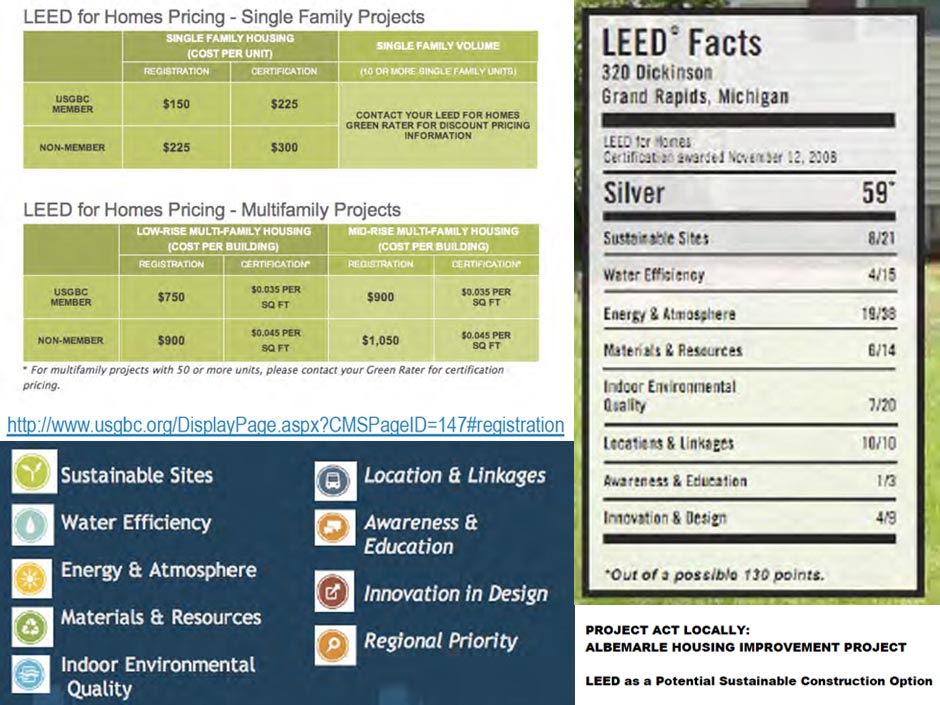Project Act Locally
Analysis of LEED as a Potential Sustainable Construction Option_ AHIP (click PDF)
Fall 2011
Team members: Sarah Buchholz, Jessica Welch, and Catherine Martin
The goal of our project was to come up with a successful green construction method for the Albermarle Housing Improvement Project to use in their local housing renovations. We specifically focused on LEED and its viability in relation to the type of work AHIP does. In order to do this, we researched LEED in depth, as well as other sustainable design methods such as ReGreen. We looked at various case studies around Charlottesville and compared them to what AHIP does, in terms of cost, size, and scope of work. We found that LEED is not the most appropriate option for AHIP to use as it focuses primarily on new construction and gut renovations, whereas AHIP generally just does smaller scale work. ReGreen is a lot more relevant to AHIP as it is flexible and can be applied to any size project on any part of a house. Although LEED can still be an option for larger new construction projects, the method that AHIP uses is very site and project specific. Our research and findings are given in the report, along with our final conclusion.

